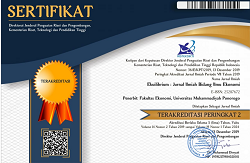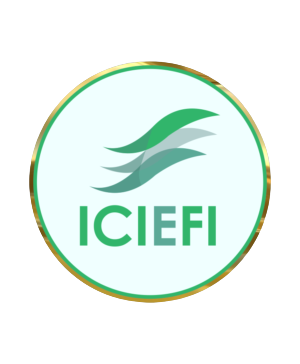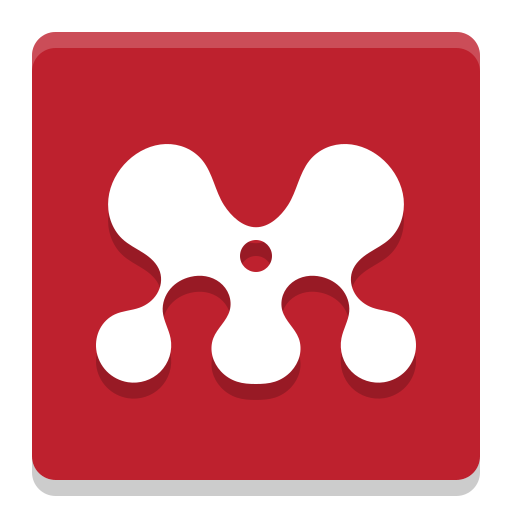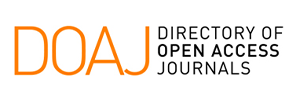The Role of Electronic Worth of Mouth in Mediating TikTok Social Media Toward the Organizational Image of Universitas Muhammadiyah Ponorogo
DOI: 10.24269/ekuilibrium.v17i1.2022.pp14-22
Abstract
The use of social media as a new medium in marketing has been considered quite effective. The users obtain plenty of marketing benefits through social media. TikTok social media has been recently famous amidst the society. This social media with a short video has the advantages to draw the attention of the viewers. The use of social media in marketing creates comments in the form of E-WOM which enables it to impact the image of an organization or company. This research uses a quantitative research method, taking 100 members of the campus tour of Universitas Muhammadiyah Ponorogo in 2021 as the sample. The marketing strategy using social media is executed by the technical implementation unit of the new student admissions of Universitas Muhammadiyah Ponorogo by creating a short video uploaded in its Instagram account. The organizational image becomes a dependent variable of this research which will be tested by the use of TikTok as an independent variable and E-WOM as a mediator variable. The result of this research shows that E-WOM has a positive influence in mediating the impact of TikTok use toward the organizational image of Universitas Muhammadiyah Ponorogo.
Keywords
References
- Agmeka, F., Wathoni, R. N., & Santoso, A. S. (2019). The influence of discount framing towards brand reputation and brand image on purchase intention and actual behaviour in e-commerce. Procedia Computer Science, 161, 851–858. https://doi.org/10.1016/j.procs.2019.11.192
- Chin, W. W. (2002). Partial Least Squares For Researchers : An overview and presentation of recent advances using the PLS approach.
- Fauziah, R., Ratnamulyani, I. A., & Kusumadinata, A. A. (2018). Efektifitas Promosi Destinasi Wisata Rekreasi Gunung Pancar Melalui Postingan Instagram Media Sosial. Jurnal Komunikatio, 4(1), 27–40. https://doi.org/10.30997/jk.v4i1.1210
- Jogiyanto, H. M., & Abdillah, W. (2009). Konsep dan aplikasi PLS (Partial Least Square) untuk penelitian empiris. BPFE Fakultas Ekonomika Dan Bisnis UGM. Yogyakarta.
- Kusumawardhani, E., & Sari, D. S. (2021). Gelombang Pop Culture Tik-Tok: Studi kasus Amerika Serikat, Jepang, India dan Indonesia. Padjadjaran Journal of International Relations, 3(1), 19. https://doi.org/10.24198/padjir.v3i1.27758
- Oktaviani, N., Astuti, W., & Firdiansjah, A. (2019). PENGARUH KEPUASAN KONSUMEN TERHADAP PEMBENTUKAN KOMITMEN PELANGGAN DAN e-WOM PADA PENGGUNA APLIKASI e-MONEY “OVO.” Jurnal Manajemen Dan Pemasaran Jasa, 12(1), 93. https://doi.org/10.25105/jmpj.v12i1.3757
- Putri, S. R., & Amalia, R. (2018). Pengaruh E-WOM Terhadap Citra Perusahaan dan Dampaknya Terhadap Niat Beli Konsumen Pada Situs Online Shopee.id. Jurnal Ilmiah Mahasiswa EKonomi Manajemen, 3(2), 75–84.
- Romdonny, J., Lucky, M., & Rosmadi, N. (2018). Peran Media Sosial Dalam Mendukung Pemasaran Produk Organisasi Bisnis. IKRAITH EKONOMIKA Vol 1 No 2 Bulan November 2018, 1(1), 25–30.
- Soares, R. R., Zhang, T. T. (Christina), Proença, J. F., & Kandampully, J. (2017). Why are Generation Y consumers the most likely to complain and repurchase? Journal of Service Management, 28(3), 520–540. https://doi.org/10.1108/JOSM-08-2015-0256
- Sugianto Putri, C. (2016). Pengaruh Media Sosial Terhadap Keputusan Pembelian Konsumen Cherie Melalui Minat Beli. PERFORMA: Jurnal Manajemen Dan Start-Up Bisnis, 1(5), 594.
- Wiridjati, W., & Roesman, R. R. (2018). Fenomena Penggunaan Media Sosial Dan Pengaruh Teman. Jurnal Manajemen Dan Pemasaran Jasa, 11(2), 275–290. http://dx.doi.org/10.25105/jmpj.v11i2.2950
Refbacks
- There are currently no refbacks.

This work is licensed under a Creative Commons Attribution-ShareAlike 4.0 International License.













